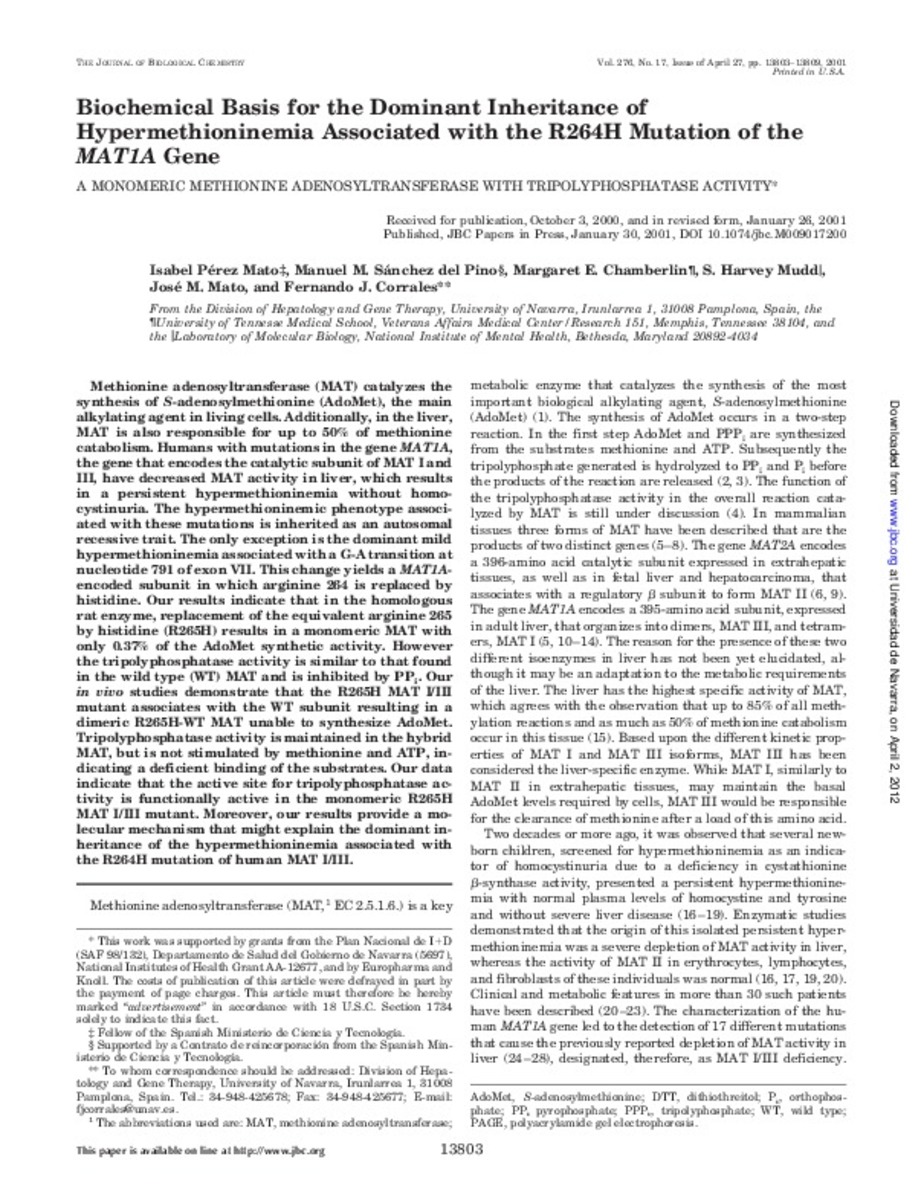Biochemical basis for the dominant inheritance of hypermethioninemia associated with the R264H mutation of the MAT1A gene. A monomeric methionine adenosyltransferase with tripolyphosphatase activity
Keywords:
Genes, Dominant
Methionine/blood
Methionine/genetics
Methionine Adenosyltransferase/genetics
Mutation
Publisher:
American Society for Biochemistry and Molecular Biology
Citation:
Perez Mato I, Sanchez del Pino MM, Chamberlin ME, Mudd SH, Mato JM, Corrales FJ. Biochemical basis for the dominant inheritance of hypermethioninemia associated with the R264H mutation of the MAT1A gene. A monomeric methionine adenosyltransferase with tripolyphosphatase activity. J Biol Chem 2001 Apr 27;276(17):13803-13809.
Statistics and impact
0 citas en

0 citas en

Items in Dadun are protected by copyright, with all rights reserved, unless otherwise indicated.







